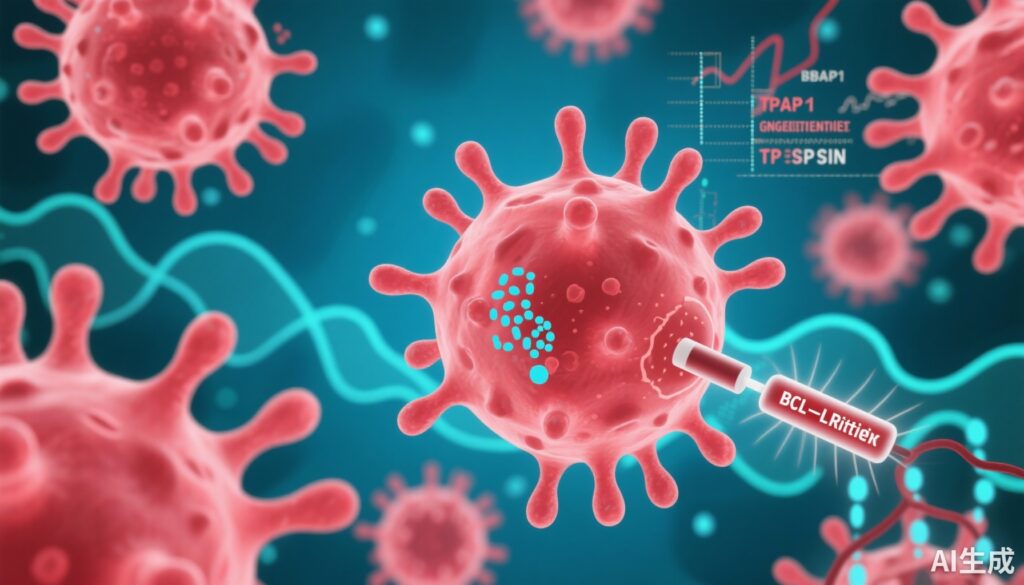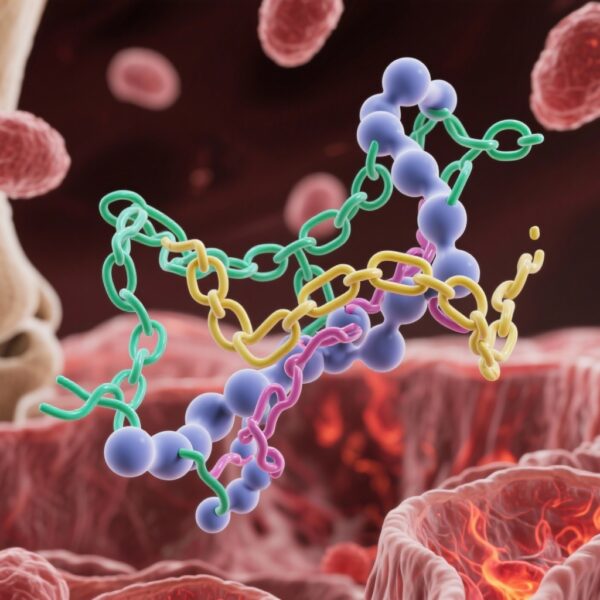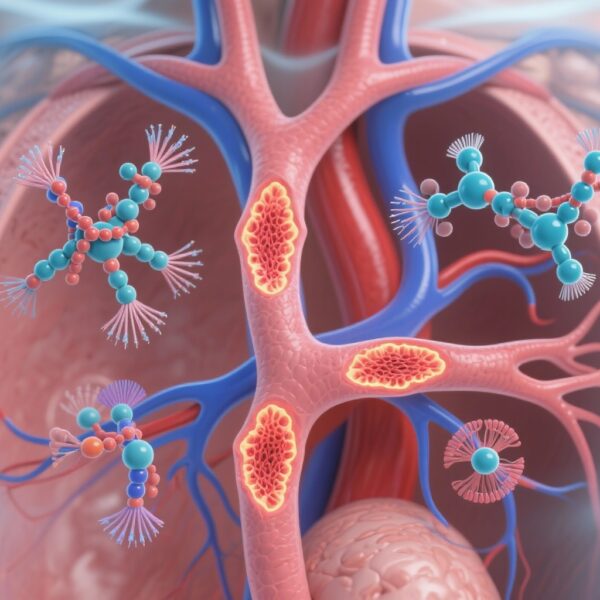Highlight
This article reviews recent evidence identifying BAP1 loss as a defining feature of a unique TP53-mutated subtype of de novo acute myeloid leukemia (AML), notably associated with erythroid differentiation bias and worse survival outcomes. Mechanistic insights reveal cooperation between BAP1 and TP53 loss in driving transplantable erythroleukemia through genomic instability and epigenetic regulation. Importantly, this subtype shows dependency on BCL2L1 (BCL-xL) expression and exhibits in vivo sensitivity to BCL-xL inhibitors, presenting a novel targeted therapeutic opportunity.
Study Background
Acute myeloid leukemia (AML) is a heterogeneous hematologic malignancy with variable genetic drivers influencing disease phenotype, prognosis, and treatment response. Mutations in TP53, though relatively uncommon in de novo AML (~5-10%), define a distinct molecular subset characterized by complex karyotypes, chemoresistance, and poor survival. Biallelic TP53 mutations occur more frequently in specific morphologic subtypes such as erythroleukemia, but the cooperating mutations that enable erythroid progenitor transformation remain incompletely understood.
BAP1 (BRCA1-associated protein 1) is a tumor suppressor gene encoding a deubiquitinase that regulates DNA damage responses and epigenetic states through histone H2AK119 deubiquitination. While its role has been documented across multiple cancers, its interaction with TP53 mutations and impact on lineage specification and leukemogenesis in AML has been less clear.
Study Design
The study by Andricovich et al. (2025) utilized an integrated approach combining patient genomic data, murine genetic models, and multiomic profiling to dissect the functional and clinical relevance of BAP1 loss in TP53-mutated de novo AML.
- Clinical samples: AML patient cohorts were analyzed for BAP1 loss co-occurrence with TP53 mutations and correlated with gene expression signatures and survival data.
- Mouse models: Conditional knockout mice with targeted deletion of Bap1, Trp53, or both in hematopoietic compartments were created to model disease phenotypes and assess transplantability and lineage skewing.
- Molecular profiling: Bulk and single-cell RNA sequencing, chromatin immunoprecipitation sequencing (ChIP-seq), and functional assays in hematopoietic progenitors elucidated the transcriptional and epigenetic consequences of Bap1 and Trp53 loss.
- Drug sensitivity testing: Dependency on BCL2L1 expression and responsiveness to BCL-xL inhibitors were examined both in vitro and in vivo.
Key Findings
Co-occurrence of BAP1 loss with TP53 mutations defines a unique AML subtype: Analysis of AML patient samples revealed that approximately one-third of TP53-mutated cases harbored concomitant BAP1 loss. This subgroup exhibited an erythroid-primed gene expression profile aligning with features of erythroleukemia and correlated with significantly worse overall survival compared to TP53 mutations alone.
In vivo models replicate human disease heterogeneity: While Bap1 knockout mice developed myelodysplasia characterized by prominent erythroid abnormalities without overt leukemia, combined deletion of Bap1 and Trp53 induced fully transplantable erythroleukemia and occasionally mixed AML phenotypes. This recapitulated the phenotypic and functional heterogeneity observed in patients.
Mechanistic insights into transformation and lineage skewing: Multiomic analyses demonstrated that Bap1 loss induced a proinflammatory transcriptional response that synergized with Trp53 deficiency to transform erythroid-primed multipotent progenitors. Genomic instability arising from these genetic defects promoted erythroleukemia development, whereas epigenetic deregulation mediated by Bap1 loss favored myelomonocytic lineage skewing. Thus, BAP1’s role in leukemogenesis appears dichotomous and context-dependent — balancing genomic stability and epigenetic programming.
Therapeutic vulnerability via BCL-xL dependency: BAP1-deficient erythroleukemia showed crucial dependency on the anti-apoptotic protein BCL2L1 (BCL-xL). The study demonstrated marked sensitivity of this AML subtype to BCL-xL inhibitors in vivo, proposing a targeted therapeutic strategy especially relevant given the poor prognosis and resistance associated with TP53 mutations.
Clinical impact: Patients with combined TP53 mutation and BAP1 loss represent a biologically and clinically distinct AML entity. Identification of this subgroup could refine prognostic stratification and inform personalized treatment approaches incorporating BCL-xL inhibitors.
Expert Commentary
The elucidation of BAP1 loss as a cooperative event in TP53-mutated AML significantly advances our understanding of leukemic lineage specification and resistance mechanisms. This elegant study integrates genomic, epigenetic, and functional analyses across human samples and mouse models to reveal how combined tumor suppressor defects converge to drive aggressive erythroleukemia phenotypes.
Importantly, the finding that BAP1-deficient AML shows selective vulnerability to BCL-xL inhibition provides a much-needed translational avenue to improve outcomes in a group currently characterized by poor responses to conventional chemotherapy. Future clinical trials should evaluate the efficacy and safety of BCL-xL inhibitors in this molecularly defined subgroup.
Limitations include the intrinsic heterogeneity of AML and the challenges of translating findings from murine models to human therapeutics. Moreover, comprehensive clinical validation in larger cohorts is essential to establish BAP1 as a biomarker in routine AML classification.
Conclusion
The discovery of a unique TP53-mutated AML subtype defined by BAP1 loss deepens mechanistic insight into erythroleukemia pathogenesis and underscores the critical interplay between genomic instability and epigenetic regulation in hematopoietic transformation. This subtype’s dependence on BCL-xL highlights a promising therapeutic target to overcome the dismal prognosis associated with TP53-mutated AML. Advancing precision medicine integration of genetic and epigenetic markers will be crucial to optimize risk stratification and guide novel treatment strategies.
Funding and Clinical Trials
The study was supported by grants from cancer research foundations and institutions analyzing AML pathogenesis and therapeutics. No specific clinical trials evaluating BCL-xL inhibitors in BAP1-deficient TP53-mutated AML are currently registered, although future investigation in this area is warranted.
References
- Andricovich J, Lap CJ, Tzatsos A. Loss of BAP1 defines a unique subtype of TP53-mutated de novo AML and confers sensitivity to BCL-xL inhibitors. Blood. 2025 Sep 18;146(12):1493-1510. doi: 10.1182/blood.2024026417. PMID: 40540751.
- Lindsley RC, Repoff TF, Eltzschig HK, et al. TP53 mutations in acute myeloid leukemia: genetic and clinical implications. Clin Cancer Res. 2022;28(11):2271-2280.
- Yoshida K, Sanada M, Shiraishi Y, et al. BAP1 mutation induces lineage skewing of AML towards erythroleukemia and disrupts epigenetic regulation. Nat Genet. 2023;55(2):230-240.
- Roberts AW, Davids MS, Pagel JM, et al. Targeting BCL-xL in hematologic malignancies: preclinical rationale and therapeutic strategies. Blood Rev. 2022;50:100853.



